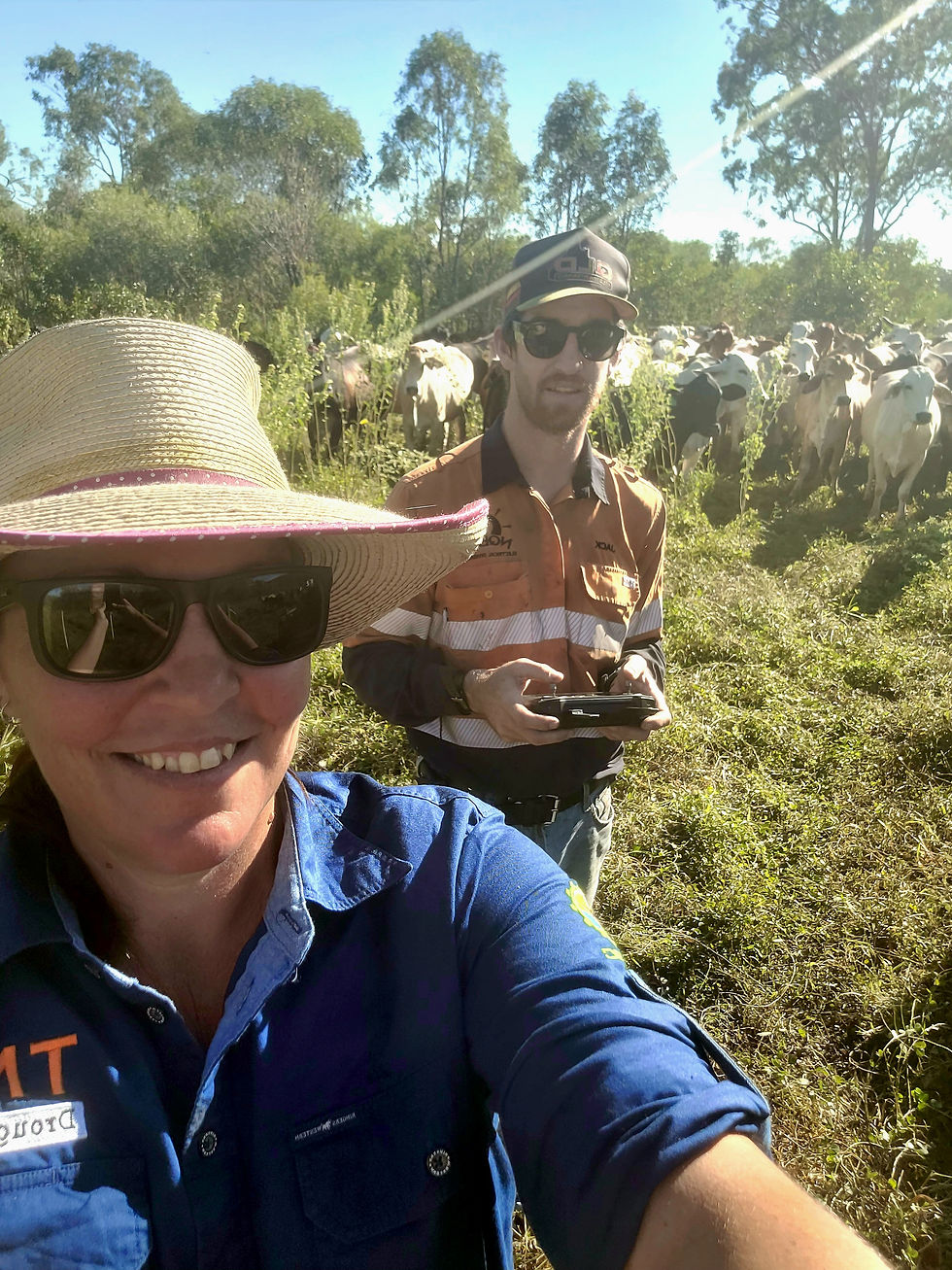From Busted Bikes to Buzzing Drones – Unexpected gains from the skies
- Azrina Iqbal
- Jul 14
- 2 min read
When the scrub’s thick and the terrain’s rough, mustering cattle on a motorbike becomes more risk than reward. That’s what producer Jack Francis and his brother-in-law realised after one too many rough days in the paddock.
“We were laying the bikes over more than we were upright,” he laughed.
“We both realised if we kept going like that, one of us was going to end up severely hurt.”
The risk of serious injury wasn’t worth it, so with support from F2F TEKFARM, they turned to something with rotors instead of wheels - a drone equipped with high-resolution and thermal imaging from Skykelpie. Four years into owning their property, Jack and his family have made some big strides. Rotational grazing has helped regenerate native pastures, reduce weeds, and lift productivity - a crucial part of Jack’s drought strategy, ensuring more ground cover and pasture availability during dry spells. And now, with a drone in hand, they’re mustering smarter, not harder.

This solution directly addresses Jack’s key challenges: labour-intensive mustering in rough terrain, inefficient weight tracking that stressed cattle and increased costs, and time-consuming water checks on remote tanks. It also supports his drought resilience goal of rotating cattle quickly in the wet and resting paddocks in the dry to boost production and pasture health.
“The technology’s helping us work with the land, not against it"
Unexpected Value in Pest Control

An unexpected bonus of drone adoption has been pest management. While they normally don’t actively go looking for wild dogs and feral pigs, they’ve been able to spot them during musters and early morning checks down the creeks. This has allowed them to set up a targeted approach to pest control - setting traps in areas where dogs and pigs have been seen wandering or camping if they’re unable to act immediately. Using this approach Jack has noticed a reduction in calf injuries from dog bites and pig damage. Though not the original intent, the drone has also added unexpected value in pest management.
It’s not only safer and more efficient; it’s cheaper too, saving them big on labour and wear-
and-tear. The only hiccup? “Dad won’t touch the drone after a crash some time ago,” Jack laughs, “so on the big musters, he’s the one back on the bike chasing the tail.”
Download Producer's Impact Story
This program/project received funding from the Australian Government’s Future Drought Fund.




Loved the vibe of Football Bros, it’s awesome how they capture real football energy! football bros.io